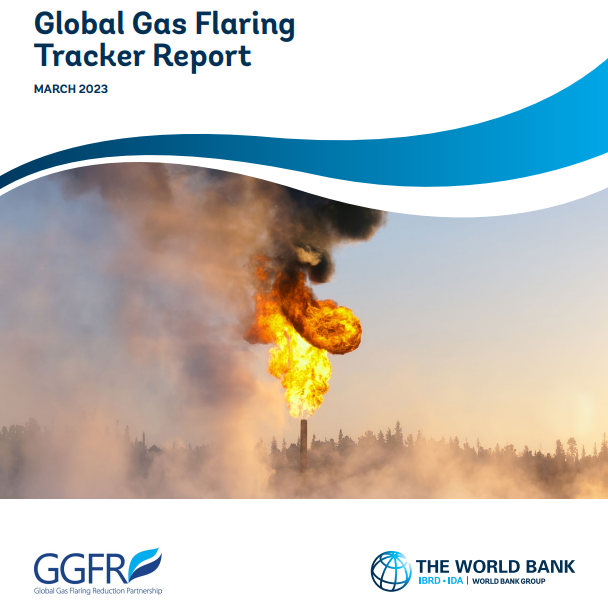
(The World Bank, 31.Mar.2023) — After a decade of little progress, global gas flaring volumes fell by around 3% in 2022. However, despite this welcome reduction, greater and sustained efforts are needed to end this wasteful and polluting practice.
The growing sense of urgency in tackling global gas flaring is further fueled by an increased concern regarding the amount of methane emitted during flaring. This year, our Global Gas Flaring Tracker Report considers the ‘state of the science’ and the uncertainty surrounding methane destruction efficiency of flares. It draws the worrying conclusion that, globally, CO2 equivalent emissions due to flaring could be higher than previously estimated.
The global gas flaring estimates that we produce yearly allow us to better understand the evolving situation and what we— as a partnership of governments, companies, and multilateral organizations—must do to end routine gas flaring by 2030.
This year’s Global Gas Flaring Tracker Report, a leading global and independent indicator of gas flaring, finds that 139 billion cubic meters (bcm) of gas was flared at upstream oil and gas facilities across the globe in 2022. This wasted gas could displace dirtier sources of energy and increase energy access in some of the world’s poorest countries. Routine gas flaring also represents a lost opportunity to provide many countries worldwide with much needed energy security.
Indeed, energy security has been a critical consideration throughout 2022, and reassuringly our estimates find that even as many countries have shifted away from importing Russian oil and gas, this has not resulted in a noticeable increase in Russian flaring. At the same time, we find that the energy sources that many countries are turning to have, in many cases, been produced by countries who are also taking steps to reduce their gas flaring.
Three countries—Nigeria, Mexico, and the United States— accounted for most of the decline in global gas flaring in 2022, with two other countries—Kazakhstan and Colombia— standing out for consistently reducing flaring volumes in the last seven years.
Two developing countries—Algeria and Egypt—also give us hope that progress on gas flaring reduction will accelerate as key ingredients for success, such as effective regulation, political will, and infrastructure are put in place. In both countries, we see noteworthy flaring reductions over the last few years but, perhaps more importantly, there are clear opportunities and efforts to further reduce flaring and utilize associated gas.
We urge all governments and operators to carefully assess how they produce oil and gas and identify and seize opportunities for effective and long-term flaring reduction. It is our hope that governments and operators will use the data and insights in this report to kickstart projects in their countries and make investments in gas flaring and venting reduction a key priority, significantly contributing to emissions reduction, energy security, and energy access in the process.
____________________

